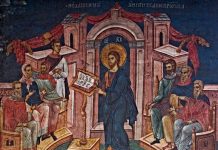George Philip Telemann (1681 – 1767) was one of the most prolific and prodigious composers in all history, with at least 3000 musical works to his credit, about half of which survive. He was a contemporary and friend of the great composers G.F. Handel, as well as J.S. Bach – who were no slouches themselves. Bach had his fellow musician stand as God-father of his son, and even bestowed Telemann’s middle name upon the child, Carl Philip Emmanuel.
Telemann’s musical career began inauspiciously. He became absorbed in music his parents forbidding him to follow such a ‘useless’ path, with the prospect of little financial reward. So young G.P. studied and practised in secret – no tiger mum hovering over him, which is his case was a good thing, the music, and the drive to excel, being internalized early on. He taught himself, if we may trust Wikipedia, “the flute, oboe, violin, viola da gamba, recorder, double bass, and other instruments”. Quite an impressive feat, for those of us who have yet to master, or even moderate, one instrument!
For all of his tremendous output, Telemann fell somewhat into obscurity, overshadowed by his contemporaries. Some critics compared some of his pieces unfavorably to Bach, without realizing that the pieces they were comparing them to were actually by Telemann himself! Anyone who can pass a blind music test with the great J.S. is someone with whom to be reckoned. Telemann has been described as a bridge between the baroque and the classical, even with the romantic.
Fittingly, Telemann has made something of a comeback in the 20th century, and we may hope he receives the recognition he deserves.
For a taste of his music, here is his concerto for violin, strings and basso continuo, and I would recommend some immersion in the great G.P. Telemann:










